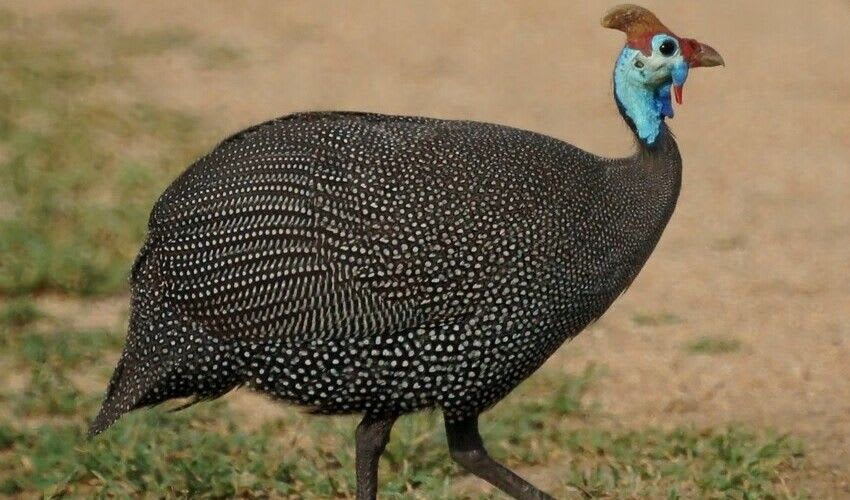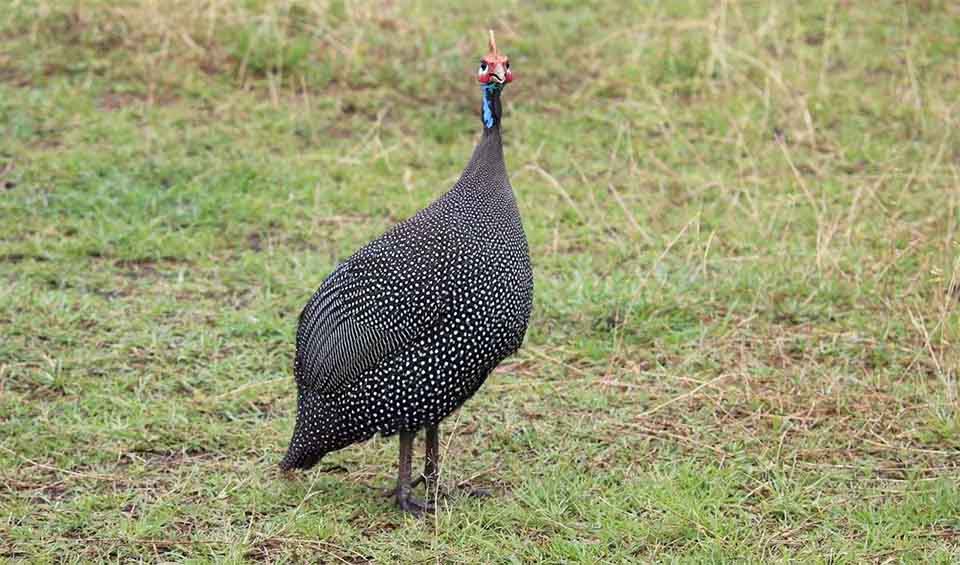Numida – Helmeted guineafowl
Native to Africa, it is the best-known bird of its family, broadly introduced as domesticated species
The Helmeted guineafowl is a distinctive bird species indigenous to Africa but has been widely introduced into various parts of the world. These small-headed, round-bodied terrestrial birds are known for their gregarious nature, often found in large flocks that can number in the hundreds. These flocks are a common sight across both wild landscapes and domestic settings, where the birds have been introduced for their meat, eggs, and pest control abilities.
Physiologically, helmeted guineafowl are well adapted for life on the ground. Their strong legs and rounded bodies are perfect for running, allowing them to escape predators with surprising bursts of speed. In the wild, these birds are known to walk up to 10 kilometers (6 miles) a day in search of food, which consists of a varied diet including seeds, fruits, insects, and small invertebrates.
One of the most significant ecological roles of the helmeted guineafowl is their consumption of ticks, which they do in large quantities. This appetite for ticks can be beneficial for controlling tick populations, potentially reducing the incidence of tick-borne diseases such as Lyme disease in certain areas. However, if the birds move from one area to another, they can also inadvertently contribute to the spread of these parasites.
Sexual dimorphism is minimal in helmeted guineafowl; males and females are similar in size, color, and appearance, which is somewhat unique among bird species. Their plumage is predominantly grey with white spots, and they are named for the bony casque, or ‘helmet’, on their heads.
The domestication of the helmeted guineafowl has been widespread, and they are now a common presence in the western market for poultry. They are raised for their lean meat, which is a culinary delicacy in some cultures, and their eggs, which are smaller than chicken eggs but are considered a delicacy.
Species in this genus
Helmeted guineafowl
Native to Africa, it is the best-known bird of its family, broadly introduced as domesticated species


